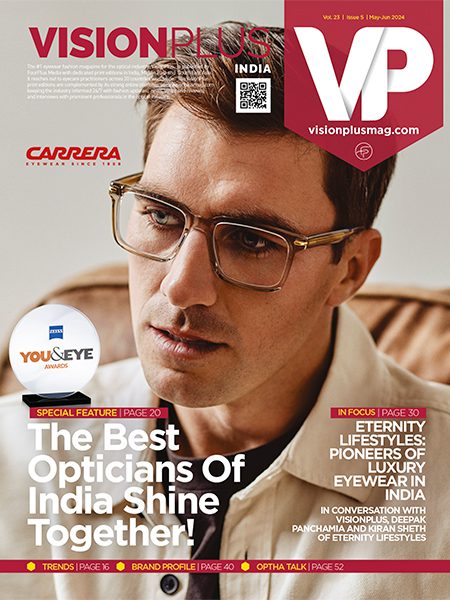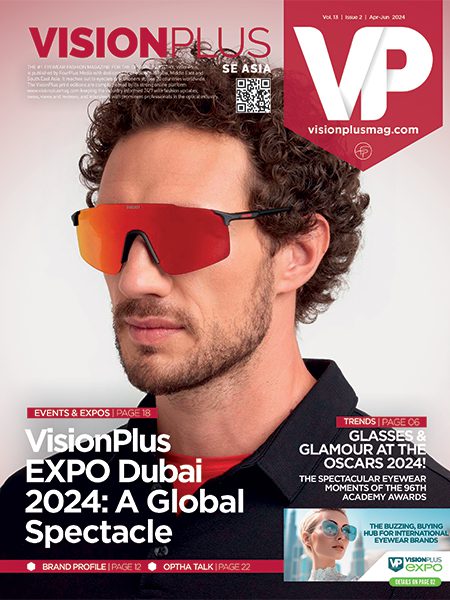

Establishing An Identity: Brands And Opticians
Milica Jojic explores the options (and the responsibilities) that the industry has while it creates different versions of its own intrinsic identity. Is it only limited to brands or do the opticians too, play a role in this?
The fashion industry has one iconic staple piece for women: a little black dress. Any designer and any fashion house you can think of has, at one time or another, created their little black dress, their unique take on a dress every woman should have.
They say you can never go wrong with it; it’s elegant and sophisticated and it fits every occasion. The optical industry goes hand in hand with the fashion industry but their “little black dress” comes in a core collection of frames better known as classics.
 This inspiration can be drawn from Italian or French styles, La Dolce Vita of the 1960, Nautical taste of the French Riviera or something entirely different. There is not one little black dress in the optical world as customers need a wide variety of styles, available in multiple colors, to find a frame that perfectly fits and complements their facial features.
This inspiration can be drawn from Italian or French styles, La Dolce Vita of the 1960, Nautical taste of the French Riviera or something entirely different. There is not one little black dress in the optical world as customers need a wide variety of styles, available in multiple colors, to find a frame that perfectly fits and complements their facial features.
There are numerous possibilities for optical frames and when you add sunglasses to the mix as well, the possibilities are endless. So what do you need to consider to establish your identity in the optical industry, or in other words, your little black dress?
Independent boutique brands who create their optical and sun collections focus on more than just designing the frames themselves.
They have to establish a story behind them, explain where the inspiration was drawn from, visualize who the customers are and develop a mission. They all have a “core collection” of classics that are full of optical little black dresses.
Their job is to create a baseline of frames that fit most faces in colors that most people find appealing. Then, to create their brand identity, they add unique shapes and colors to stand out.
Although we established there can be numerous simple frames out there, this does not prevent brands from adding a personal touch.
Just like Donatella Versace’s little black dress differs from Coco Chanel’s version of it, there are abundant unique details that can be added to glasses. Moreover, they can create special cases and embed their brand colors and logo to stand out.
Apart from differentiating a brand visually, there should also be a story behind them. This helps create an identity that optical shops can
relate to.
Let’s take a look at some values a company can have: inclusion, diversity, honesty, social responsibility, value-centricity, etc... A brand can choose a couple of values to stand behind and center their business around.


In order for optical shops, who carry multiple brands, to create their identity, they must ensure their partners’ values align with their own.
Brands they carry in stores should be carefully considered for the obvious - quality, affordability, durability and then also the less obvious but extremely important - mission, vision, values.
For example, when an optical shop buys frames from a boutique brand, they should look at their whole image. What is their presence like and does it tell their story? Do they even have a story? They should.
They can have a digital presence or printed communication that backs up their products but even the biggest and most luxurious brands have a signature and an origin story.
The imagery they use and their representation should mirror your customer base and create an inclusive environment for all your customers to feel comfortable. You should be able to confidently say their values align with all of your own.
Consequently, once in store, optical shop owners could design the store interior in any way they like to create a special experience for their customers. I find that most optical stores nowadays try to cover every corner with shelves and frames and this can be overwhelming for buyers.
Instead, by choosing only brands you truly love, you can have fewer but higher quality products to recommend to your customers. This harbors a more loyal relationship.
As a public relations and communications coordinator at Denon Eyewear, I would also strongly recommend having a social media page. It is incredibly important for customers to see how frames sit on a face and how colors photograph in real life.
Studio shots of products are always great but they have no story behind them. Curate a feed, a collection of photos and short stories, your customers can relate to; develop an identity they would want to be familiar with and give your customers a piece of yourself that they can know you by and support you for.







